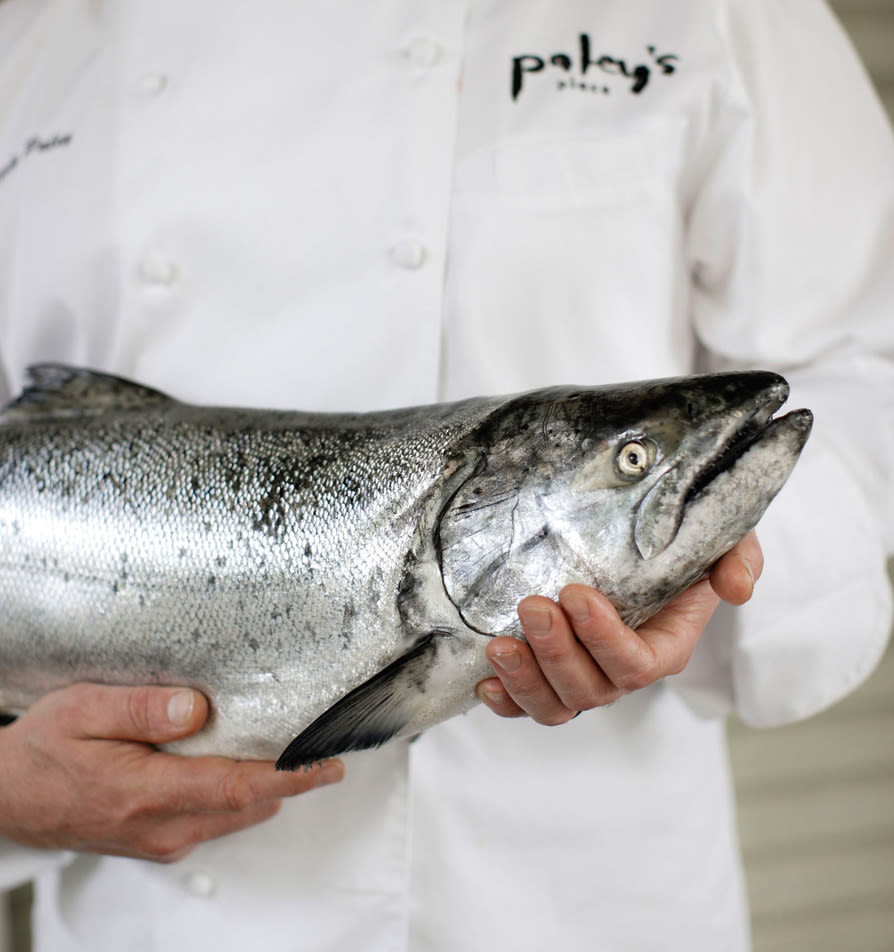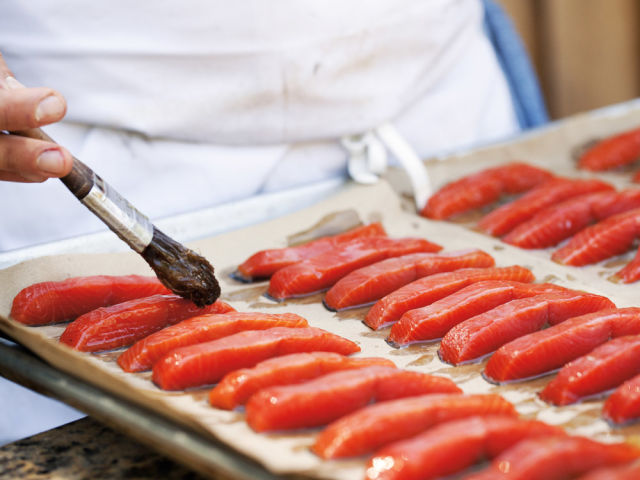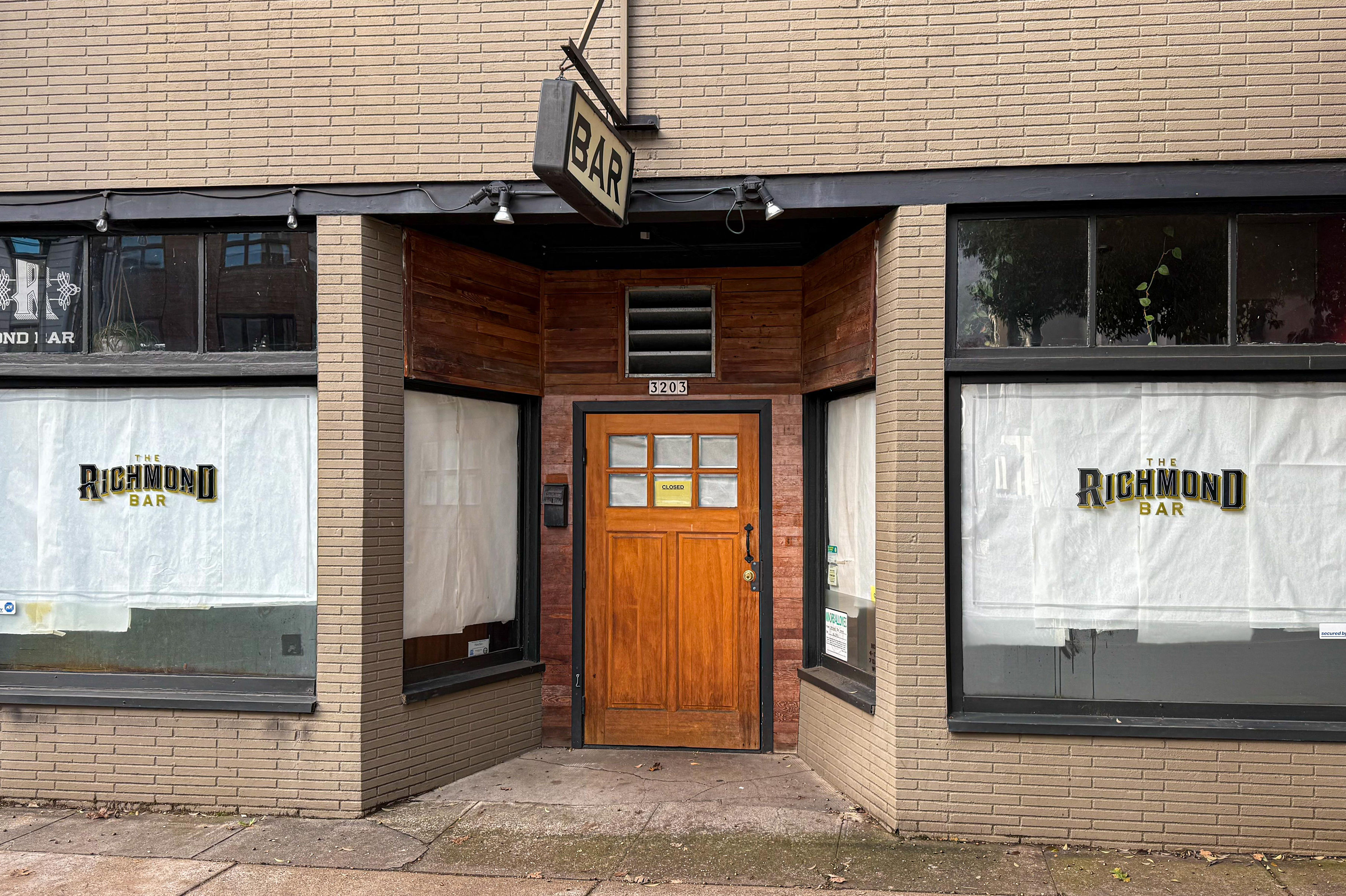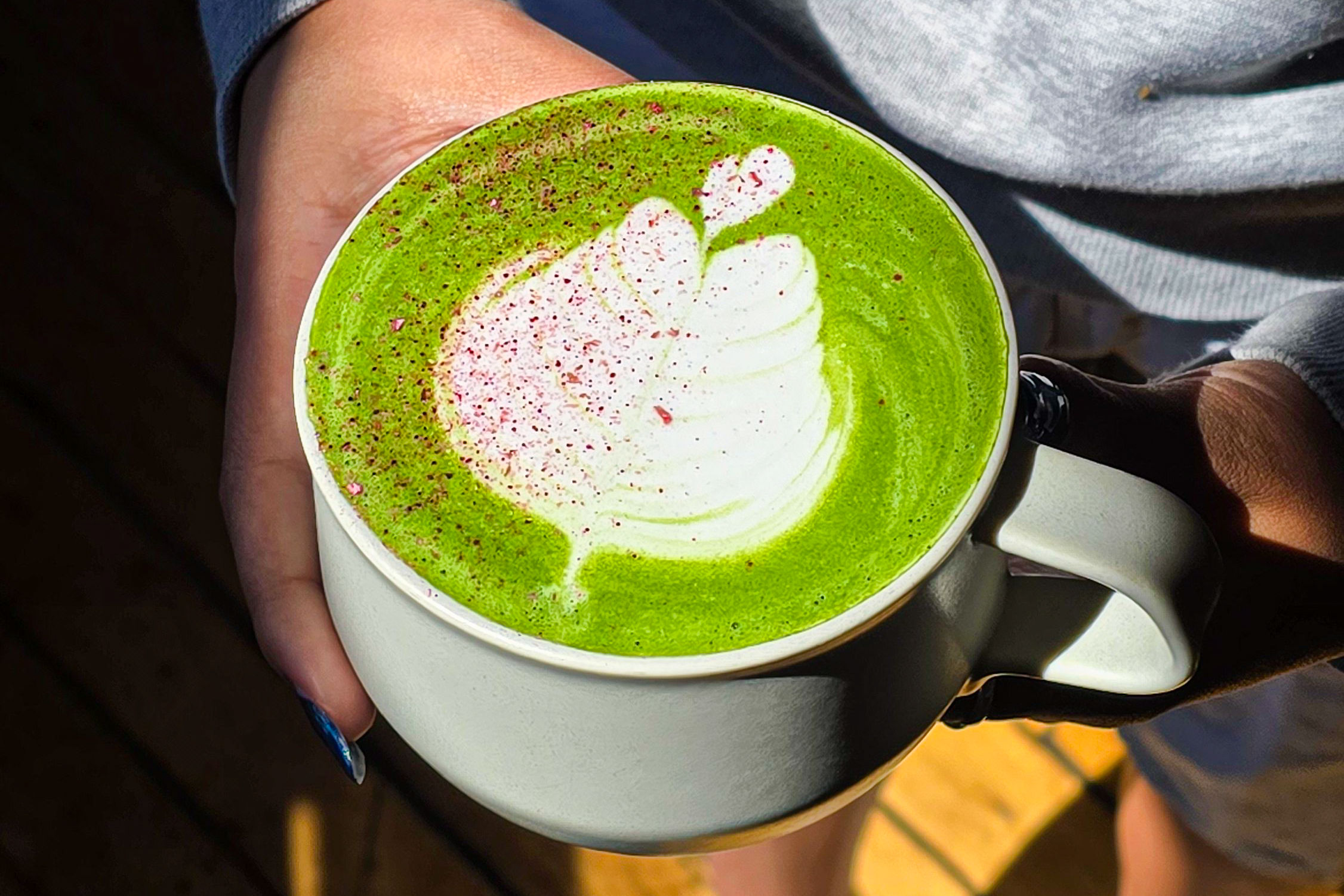Hooked on Chinook

Image: John Valls
For those Portland chefs whose adherence to seasonal offerings borders on militancy, few things signal the arrival of spring like the red-marbled flesh of wild chinook salmon. Its annual appearance in the city’s kitchens is an experience that Vitaly Paley of Paley’s Place can describe only in transcendental terms. “All winter you’re dealing with rock cod and black cod, and there’s no color,” he says. “Then all of a sudden there’s salmon and there’s color; it sends up a little signal that spring is here, and you start thinking: "what can I pair this with?”
No other fish—in fact, no other species of salmon—is thought to usher in spring like the chinook (also commonly known as the king salmon). In late March, these giants gather at the mouths of the great Western rivers: the Copper, the Trask, the Yukon, the Sacramento, and Oregon’s own Columbia. They bolt en masse from the frigid Pacific waters armed with rich layers of fat as they begin to make the harrowing journey to distant spawning grounds. Salmon caught early, at the mouth of the river, taste best because they haven’t yet expended their precious fat stores. And chinook, being the largest of all salmon, are the most coveted.
Thanks to its high content of omega-3 oil (more than any other salmon) the chinook is both the most flavorful salmon and a heart-healthy option. And its firm, flaky meat is the most forgiving to cook. “You can grill them; you can sauté them; you can bake them,” says Marco Shaw, owner and executive chef of Fife restaurant.
Paley prefers to cook chinook using cedar planks. He marinates the fish in brown sugar, salt, and orange zest, then tops it with Walla Walla onions and basil. But lest you feel constrained by such a traditionally Northwest preparation, he also suggests serving it as a fresh sashimi-style dish by lightly curing it in a drizzle of lemon, sea salt, and olive oil—the perfect complement to a spring salad.
Of course, you may have been eating salmon all winter, since rows of perfectly pink steaks beckon from behind grocery-store glass year-round, but for Paley and other chefs, the ubiquitous and less expensive farm-raised alternative is “not an option.” Some argue that the omega-3 levels in commercially farmed fish are lower than those in wild fish, and that the meat may be laced with pollutants and antibiotics; others fear that Atlantic kings being farmed on the West Coast could spread infectious diseases and that nonnative escapees could threaten the local ecosystem and the health of wild runs. There’s also the fact that the lovely uniform pink of those ever-present grocery steaks owes to little more than additives.
“We as consumers need to understand that when salmon aren’t in season, there are other fish out there,” Paley says in the hopes that people will wait, like he does, to get their salmon fixes in the spring.
A dismal 2008 run and dreary predictions about the 2009 harvest have many retailers antsy about scarce supplies and soaring prices, though costs are expected to drop slightly from last year’s high (wild spring chinook can run upward of $20 per pound). Fishermen are anticipating a commercial haul of about six thousand Columbia River chinook, which translates to roughly a hundred thousand pounds of Columbia kings in the marketplace. Get ’em while you can.
Vitaly Paley's Grilled Cedar Planked Salmon

Image: Charity Burggraaf
(Serves 4-6)
- 1 2-lb piece wild king salmon, scaled, preferably from the belly of the fish
- 2 tbsp kosher salt
- ¼ cup packed brown sugar
- Grated zest of 2 oranges
- 6 tbsp extra-virgin olive oil
- 1 small bulb garlic, peeled, separated into cloves, and finely chopped
- 1 Walla Walla onion, halved and thinly sliced
- ½ cup fresh basil, coarsely chopped
(1) Once de-boned, place fish in a large glass baking dish.
(2) In a bowl, mix salt, brown sugar, and orange zest, and generously rub into both sides of the salmon.
(3) Cover and refrigerate for 2 hours.
(4) Preheat a gas grill or get a charcoal grill red-hot.
(5) Brush both sides of the cedar plank with 3 tbsp olive oil and spread chopped garlic on one side.
(6) Place the salmon on the garlic and cover evenly with chopped basil and onion. (Pile onion on the top and sides of the fish to prevent burning.) Drizzle with the remaining 3 tbsp olive oil.
(7) The plank should ignite when you place it on the grill (salmon side up). Let the plank burn all the way around the fish. Once the exposed plank has burned, cover the grill to smother the fire.
(8) Grill salmon without turning for 15 minutes until medium rare (or until a thermometer inserted into the thickest part reads 130 degrees).
(9) Serve immediately.
Chef’s Tip: Untreated cedar shingles purchased at a lumberyard work well as planks.




